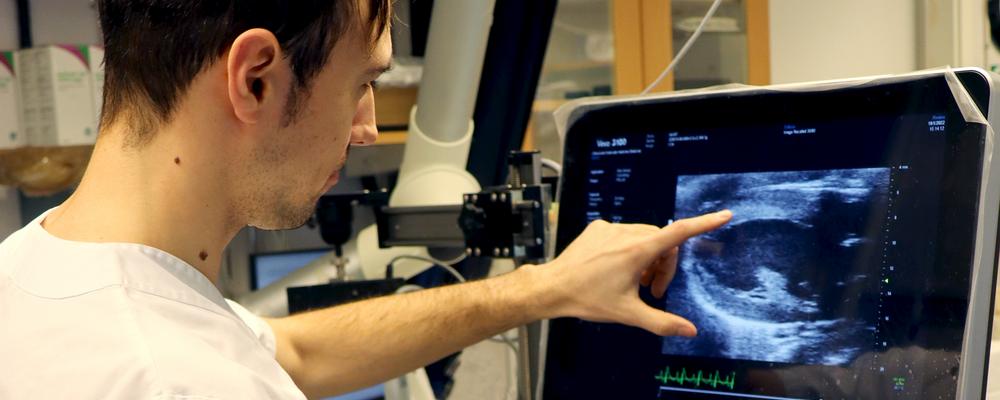”This project aims to understand the molecular pathways of Takotsubo syndrome and Acute myocardial infarction using quantitative proteomic profiling analysis. The study design involves profiling the heart’s proteome in different states using in-vivo models of Acute myocardial infarction and our recently developed world-leading model of Takotsubo syndrome in rats. This type of comparative study has never been done before, and we are currently in a unique position to undertake it.”
Ermir chose to pause his cardiology specialty training, for a PhD-training, which reflects his commitment to both medical research and patient care. Driven by a genuine passion for research and a wish to make a meaningful impact on patient care.
- The path to pursuing research was not about stepping away from clinical practice, but rather, about diving deeper into the complexities of medicine to ultimately enrich the care I offer to my patients. Through the intellectual challenges and growth encountered during my PhD, I've gained a more nuanced and informed perspective on patient care. Although my contribution might seem small in the extensive field of medical knowledge, I am hopeful that it will serve to enhance our understanding and treatment of diseases in the future.
From a research perspective, what value have you got from using Core Facilities? Could you give an example?
- Absolutely, particularly EBM has been instrumental in the development and refinement of our animal model of Takotsubo syndrome, which is critical for my work. Given that this condition is closely linked to stress, it was crucial for us to develop a model that not only accurately represents the syndrome but also ensures the highest standards of animal welfare and the principles of the 3Rs*. The close collaboration between our research group and the expertise and resources offered by EBM, during the development and refinement of the model, enabled us to achieve this.
How have you experienced the workflow within Core Facilities, could you briefly describe the process?
- Working across different units within Core Facilities has been seamless and the work with EBM and PCF, in previous projects, has been incredibly rewarding. The workflow is efficient, thanks to the knowledgeable, curious, and helpful individuals in these units. They are not just colleagues but partners in advancing science, equipped with tools and a shared goal. Their support and collaboration have been important in making the research process both effective and enjoyable. I think that Core Facilities allow for synergistic effects from utilizing the different units. The new project I will undertake with PCF directly complements the research at EBM. This integration aids in my current work and paves the way for additional findings, creating a ripple effect.
When it comes to learning and education, have you had the chance to learn new things from Core Facilities’ experts, bringing value to your research?
- I feel that my time at "kliniska forskarskolan" at Sahlgrenska Academy, alongside the mentorship under Elmir Omerovic, my colleagues within our research group, and our collaborative groups, has created an environment for both personal and professional growth. Core Facilities has significantly complemented and enhanced this experience. Working with EBM has deepened my understanding of preclinical research, while PCF experts have expanded my knowledge in proteome studies. This comprehensive milieu not only supports my research endeavors but also equips me with a broad spectrum of skills and insights.
Could you tell us in short about one or two main highlights of your research project during 2023 or the coming year?
- One of the main highlights from 2023 was receiving the Bollan Scholarship. I believe it validates the significance of our work with animal research models. Looking forward, we're enthusiastic about our project with PCF, as it promises to directly inform and enhance our research efforts. Additionally, I am curious to explore how the Centre for Cellular Imaging (CCI) can support us in cardiac imaging and how Bioinformatics and Data Centre (BDC) can assist with our forthcoming proteomic data analysis.
